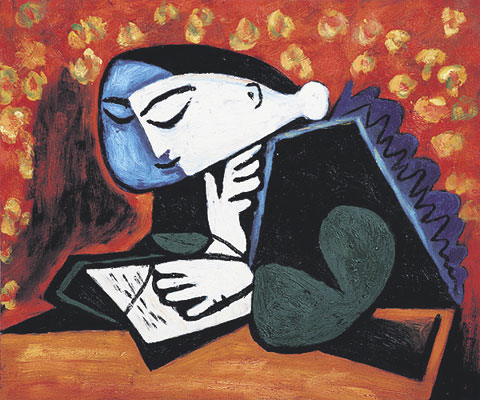What is our state-of-the-art? I am not referring to the highest level of development reached at any particular time as a result of modern methods, but to the state-of-the-art that expresses our development as students, including science and technology and going beyond it.
It includes hobbies, conversations, travels, experiences and activities that are not necessarily related to studying but that do influence our development. If we take modern art as an example, reflection on this new way of seeing development can increase our awareness of its state.
Coming to Europe, one of the things I had wanted to do was to see as much modern art in as many different countries as time and other scarce resources would allow. Forming a better appreciation for art was something I have always wanted to accomplish. Because it is not exactly a technical matter, I figured it would represent a nice break from science and technology.
In the most recent escapade, a closed exhibition led me to the museum shop where I picked up a copy of ‘Picasso’ by Gertrude Stein. Throughout her book, the American writer colorfully describes Picasso’s struggle to ‘express things seen not as one knows them but as they are when one sees them without remembering having looked at them.’ It all seemed too familiar. Repeatedly I was taken back to exams, a quarterly struggle of my very own in which I had to express the things I learned, sometimes even without remembering having looked at them.
Thinking more about what is to be learned, I was taken back to one of the times my father was helping me study. He told me that when we learn something, when we really learn it, it comes up naturally upon being recalled. It is close to not even having to think about it, he said, like it has become part of oneself. Could this be true? I decided to experiment until I experienced it myself. Finally I did. Since then I have wondered how exactly I could become more effective at achieving those experiences and at clearly expressing what I learned.
When I read about Picasso and his struggle, this thought came back. Picasso had a new way of looking at the world. And in some sense, as students we do too, for example when we are acquiring new ways of looking at things. How we experience the learning process, what and who is around us, whether we approach learning openly and welcomingly, how motivated we are, gives us a good idea of our state-of-the-art. This kind of reflection is beneficial in this developmental stage of ours, since it can lead to better appreciation of our efforts for self-actualization.
This brings me back to Picasso, and the things we see not as we know them but as they are when they are seen without remembering having looked at them. I say these are the things we learn. Honing our ability to fluidly recall concepts and ideas, put them to use and express them clearly, is an important reason why we are students. How we express these things we learn is our state-of-the-art.
And much like art, through appreciation it becomes part of who we are.



Comments are closed.